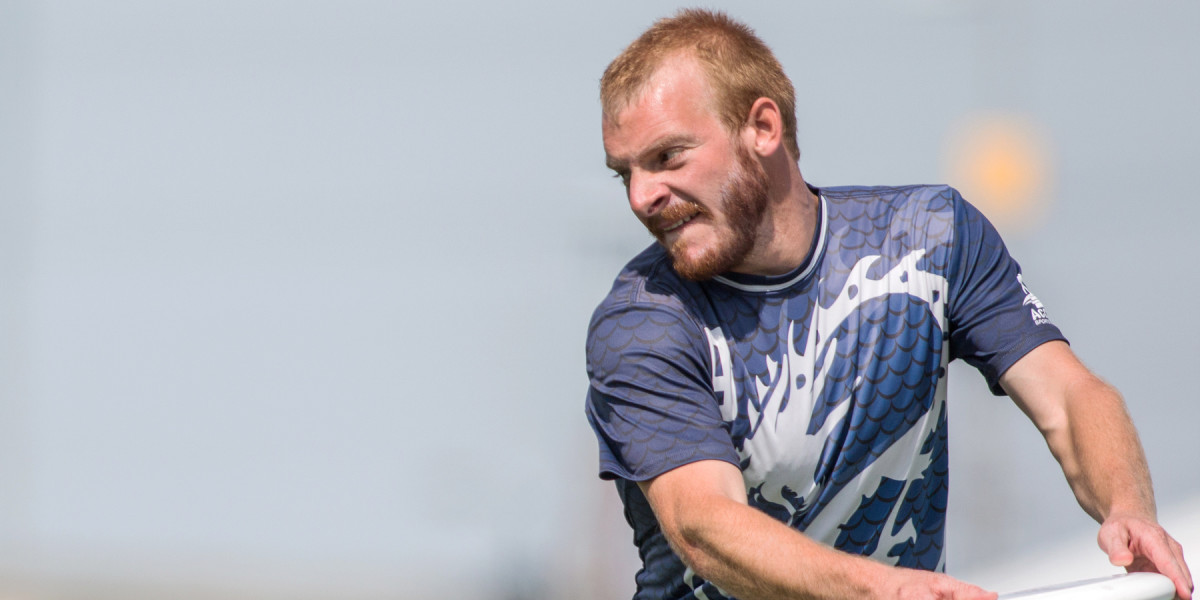 USAU Club Nationals 2015. Photo by Daniel Thai of Ultiphotos.
USAU Club Nationals 2015. Photo by Daniel Thai of Ultiphotos.
When I created The Ultimate Athlete Project, I built the programming from the ground up with the sport of ultimate in mind. This is key, because when you’re doing sport specific training, you have to look carefully at the movement demands of the sport you’re training for. I’ve written before about movement demands of ultimate in regards to conditioning. In this article, we’ll address the major movement demands of throwing.
In throwing, or any rotational movement, power is generated from the ground up. How the feet are planted, hip action, and core stability all affect the power and distance of our throws. Furthermore, keeping the hips and shoulders healthy over hundreds of repetitions requires good training habits.
So let’s look at a few things we can do to address the rotational component of ultimate from the ground up.
- The Hips
In the backhand, pull, and big hucks especially, the glutes are involved in actually decelerating the rotation of the hips in both the windup phase and as the rotational forces are transferred upward in the body through the core and into the shoulders. Watch this video for a more in depth explanation of the biomechanics.
In addition, low release backhands and forehands cause very assymetrical demands on hip function.
For both of these reasons, functional strength training for ultimate must include single leg strength work that focuses not only on building strength, but also on balance, coordination, and control. I love the backwards lunge to SLDL for this reason. It is a complex movement that really challenges the glute medius to maintain balance and keep the hip from jutting out to the side.
Start this exercise with no weight. An athlete should be proficient at the SLDL before attempting this exercise. Once proficient, weight can be added.
- The Core
In throwing, the core does not rotate much at all. In fact, its primary function is to resist rotation. Placement of the feet start the chain of events. Power is generated by the lower body, especially in rotation of the hips. The core then remains stable as rotational momentum is transferred to the upper body into the thoracic (upper) and then into rotation of the disc.
Here’s one example of a type of exercise that resist the forces of rotation.
There are many variations of the Pallof press, some overhead, some kneeling. This is a basic version that starts in a quarter squat position. This is one of those exercises that looks a lot easier than it actually is. Stand with your hips parallel to the cable column or band. One repetition is three times holding for ten seconds. Bring the handle in toward the chest and back out again between each ten second interval.
For more ideas, check out part 3 of Thom’s stability series.
- The Shoulders
Shoulder health is the third component that a throwing athlete needs to be aware of.
Throwing a lot will likely cause some asymmetry in shoulder function and mobility. Toward the end of this video on backhand biomechanics, Christian Sandtröm talks about how the scapula, an important part of the shoulder complex, moves in the windup phase of the backhands. To address this, an ultimate player will constantly be working on scapular stability.
One thing we can do for scapular stability is to work on the small muscles that help hold the scapula in place and move as it is supposed to around the rib cage. One of my favorite exercises for this purpose is the bow and arrow.
It’s fairly easy to perform. Just pretend you’re in The Hunger Games. Face the cable column or a band and draw the handle or band back toward your ear. Stand tall and keep your elbow up.
For more ideas on shoulder health, read Ren’s awesome article here.
Training for ultimate needs to take into consideration the rotational demands of throwing in ultimate. I hope this article gives you a few ideas of the types of exercises you’ll want to include in your programming.
All of these exercises are used in The Ultimate Athlete Project at some point in the year. The year long plan is designed with all of the demands of ultimate in mind. Quick heads up: if you’re interested in joining the UAP, registration ends on Thursday, November 12. This is the last recommended opening for college players, semi-pro players, and European players looking to peak around April or May. If you want to get started in The Ultimate Athlete Project, sign up here.











Comments Policy: At Skyd, we value all legitimate contributions to the discussion of ultimate. However, please ensure your input is respectful. Hateful, slanderous, or disrespectful comments will be deleted. For grammatical, factual, and typographic errors, instead of leaving a comment, please e-mail our editors directly at editors [at] skydmagazine.com.